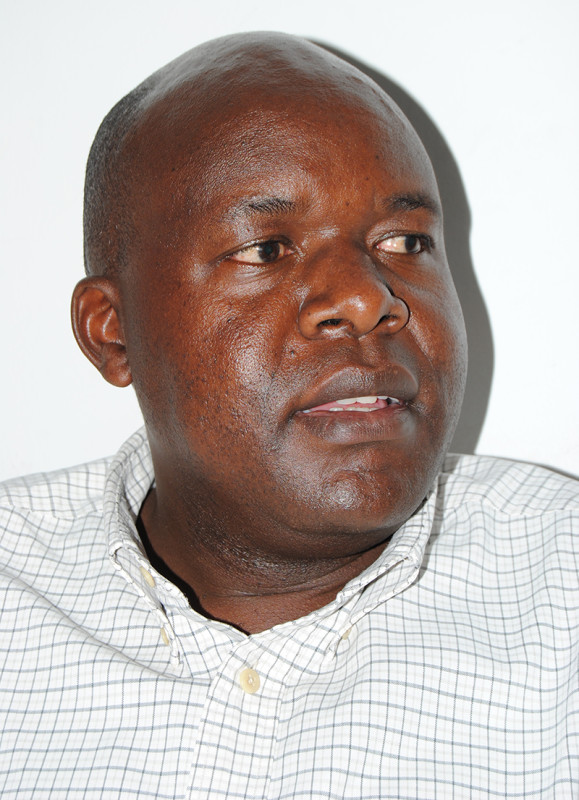Alfred Achar of Bayrise Fish Farm outlines the present and future of East Africa’s aquaculture market

Alfred Achar is the managing director and founder of Bayrise Fish Farm, a fast-growing fish farming company on the banks of Lake Victoria, Africa’s biggest freshwater fishery. The firm specializes in rearing, preserving, and distributing naturally bred tilapia. Achar spoke with SeafoodSource about the status of East Africa’s aquaculture sector, the region’s fish market, and how Bayrise intends to leverage available market growth opportunities to expand its operations.
SeafoodSource: How would you describe the current status of East Africa’s aquaculture market?
Achar: Aquaculture is the fastest-growing agrifood sector globally, and East Africa is no exception. Although the growth of aquaculture in the region is not matching ever-increasing market demand, fish is increasingly becoming the preferred healthy protein [option] with [a] low carbon footprint, especially in Kenya, Tanzania, and Uganda. The region’s market is in its infancy but has grown four- to five-fold over the past five years.
However, with the region’s vast water resources – especially rivers and lakes such as Lake Victoria, and good water quality parameters that support year-round aquaculture – East Africa is a potential prime source for blue food [opportunities] in Africa.
Unfortunately, East Africa’s wild fish stocks are overfished, and volumes have stagnated. This trend is expected to continue with the supply-demand gap expected to widen. East Africa’s population of 175 million people is expected to double in the next 30 years, pushing up the demand for additional protein supply and opening up substantial fish market opportunities for small and medium aquaculture enterprises (SMEs). But, at the moment, some of the countries in the region are actually importing frozen fish from China to meet their supply deficit, even though the local population prefers fresh, locally reared fish.
SeafoodSource: How, in your view, can the market meet this increasing demand for fish in East Africa?
Achar: The biggest obstacle to increased fish output in East Africa is access to quality and affordable inputs, such as fingerlings and feed. I believe we can learn from the success story of aquaculture in Egypt, which is the top aquaculture producer in Africa, by supporting the construction of adequate hatcheries to meet the national demand for fish seed. East Africa can do the same, especially around our major lakes where intensive cage farming is taking place.
East Africa needs to emulate Egypt by prioritizing the aquafeed subsector. Egypt now has more than 100 feed mills in operation, [producing] more than 1.4 million metric tons of high-quality floating and sinking aquafeed for farmed species annually. Some of the millers are exporting to other African countries, such as Kenya. East African countries should create a suitable investment climate to attract investors in aquafeed production.
SeafoodSource: What led you to embark on such an ambitious aquaculture enterprise, and how has the journey been so far?
Achar: When I was growing up, there used to be an abundance of fish, especially for the folks along Lake Victoria where I come from. With the increasing human population and decline of capture fisheries, fish has not only become a rare species but also expensive. The reality that Kenya [faces] now to import fish to meet this increasing demand drove me to venture into aquaculture. I named my company Bayrise based on the location of the fish farm, Karungu Bay on the shores of Lake Victoria. The company is geared toward the rise of this bay as a major contributor to fish production in East Africa.
As for Bayrise’s journey, it has been challenging. The enterprise is capital-intensive, particularly when it comes to getting the right inputs, [as well as] ensuring market linkages and associated infrastructure for a seamless farm-to-table operation. In Kenya, the cost of capital is high, averaging 15 percent, hence making it hard for aquapreneurs to grow their businesses. Furthermore, the traditional financial institutions in the country [have] yet to understand the concept of aquaculture as a business they can finance. We have to educate them to recognize that ours is an attractive sector that deserves financing, just like others.
SeafoodSource: What contribution do you see Bayrise making toward the achievement of adequate seafood in East Africa?
Achar: We are currently constructing a hatchery on our farm to supply fingerlings not only to meet our own needs but to supply surplus to other aquaculture SMEs at an affordable cost. Also, our strategic partnership with Aller Aqua has allowed us to have access to quality feed for our farm.
Bayrise and its strategic partners are also implementing a three-year, EUR 3 million [USD 3.2 million] outgrower project to empower 300 smallholder farmers in Kenya’s Migori and Homabay counties, which border Lake Victoria. The project seeks to demonstrate that SMEs can become profitable and create jobs through increased use of high-quality inputs, capacity building, and market linkage. Bayrise is the implementation partner SME, Aller Aqua and the Sustainable Trade Initiative (IDH) are sponsors, and The Royal Danish Embassy in Nairobi is the project’s measuring and evaluation partner.
SeafoodSource: Could you elaborate a bit more on your partnership with Aller Aqua and how it has impacted fish farming in East Africa?
Achar: Aller Aqua is known as a leading provider of high-quality feed for sustainable aquaculture all over the world, and both companies were very excited when this partnership was announced. Access to high-quality and affordable feed is critical in delivering healthy, sustainable, and affordable protein.
When growing fish in cages, intensive ponds, or recirculating aquaculture systems (RAS), farmers depend on formulated, often extruded, and floating feeds. Our partnership is growing stronger, beyond just providing high-quality aquafeed to farmers to include free training to farmers building sustainable agricultural systems that preserve environmental integrity, increase economic benefits, and promote social equity.
SeafoodSource: Lake Victoria has recently experienced fish deaths with many fish farmers reporting losses. What caused the fish deaths, and how was Bayrise impacted?
Achar: The recent fish deaths were ...
Photo courtesy of Alfred Achar/Bayrise Fish Farm





Share